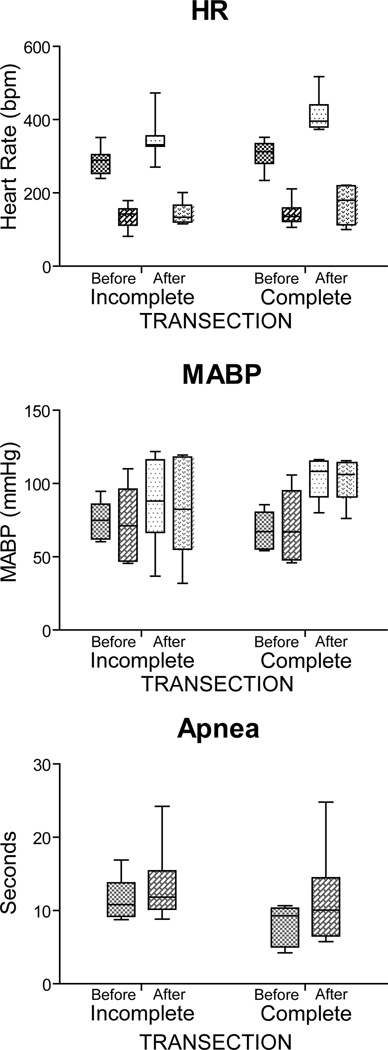Figure 3.
Box plots illustrating the changes induced in heart rate, mean arterial blood pressure, and apnea after stimulating the nasal mucosa of rats with ammonia vapors both before and after transecting the brainstem at the pontomedullary junction. Transections judged Incomplete (n=7) are shown on the left while those judged Complete (n=6) are on the right. Mean bradycardia induced by nasal stimulation was similar despite degree of transection, but resting heart rate increased after transection, especially complete transections. Mean arterial blood pressure stayed relatively the same after ammonia stimulation, but resting pressures were increased after complete transections. The mean time for apnea induced by nasal stimulation was unchanged with transections, but became more variable. Lighter shades of boxes represent control data prior to nasal stimulation while darker shades represent cardiorespiratory consequences during nasal stimulation with ammonia vapors. See text for levels of significance.

